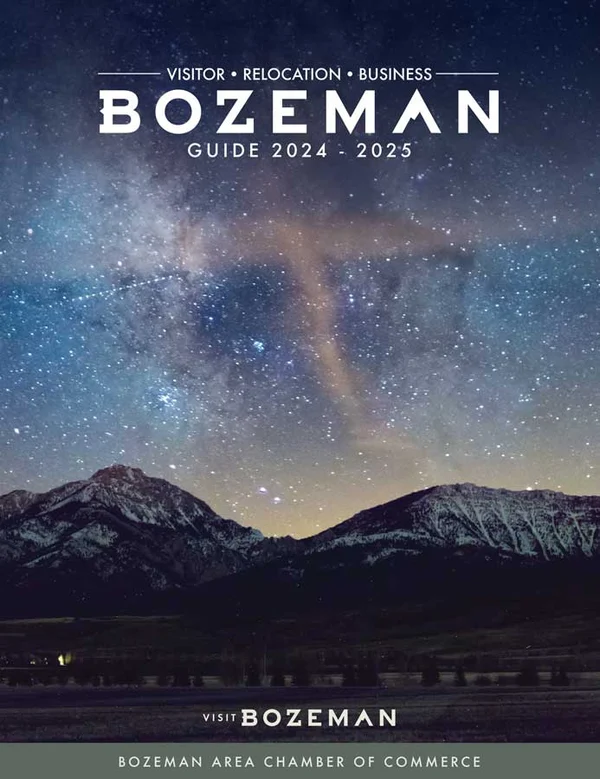History Unveiled: A Journey Through Time
Native Heritage and Early Exploration
Long before European settlers arrived, the fertile valley where Bozeman now stands was treasured by numerous Indigenous peoples. The Gallatin Valley served as hunting grounds and seasonal gathering places for tribes including the Blackfeet, Shoshone, Nez Perce, and most prominently, the Crow Nation. These original stewards of the land followed the abundant wildlife that thrived in the valley, establishing a deep connection to this landscape that continues to inform the region's cultural identity today.
As you explore Bozeman and its surroundings, you'll find this Indigenous heritage acknowledged through place names, museum exhibits, and cultural events that celebrate these first inhabitants.
- The name "Gallatin" for the valley and river comes from Albert Gallatin, Secretary of the Treasury under Presidents Jefferson and Madison
- The region was part of the Louisiana Purchase of 1803, though remained largely unexplored by Euro-Americans until the Lewis and Clark expedition
- The expedition's travels brought them through nearby areas in 1805-1806, though they didn't directly traverse what would become Bozeman
- Indigenous trails through the Gallatin Valley later became important routes for fur trappers and early settlers
The Bozeman Trail Era
In the 1860s, the discovery of gold in Montana Territory dramatically altered the region's trajectory. John Bozeman, an enterprising Georgia-born frontiersman, established the Bozeman Trail in 1863 as a shortcut from the Oregon Trail to the Montana goldfields. While controversial for cutting through lands promised to Indigenous tribes by treaty, the trail brought a steady stream of settlers through the Gallatin Valley.
Walking through downtown Bozeman today, you can almost envision those early wagon trains making their way along what would eventually become Main Street, with the Bridger Mountains serving as their backdrop and navigational landmark.
- John Bozeman recognized the valley’s agricultural potential while establishing his trail
- The Bozeman Trail became a flashpoint of conflict with Indigenous tribes, leading to Red Cloud’s War
- Despite dangers, the trail encouraged lasting settlement in the valley
- Historical markers throughout the region tell this complex migration story
Founding and Early Development
Recognizing the valley’s rich soil and water access, John Bozeman and Daniel Rouse officially founded the townsite in 1864. Unlike boom-and-bust mining towns, Bozeman was planned as an agricultural hub, ensuring sustained growth and relevance.
That legacy lives on in the farmlands surrounding the city and the weekly farmers market that links residents to local producers.
- Incorporated as a town in 1883 and a city by 1922
- Original city planning featured wide streets and a grid layout still in use today
- Bozeman’s agricultural base provided stability amid regional mining declines
- Historic downtown buildings preserve the town’s early architecture
The Railroad and Higher Education
Two defining developments in the late 1800s shaped Bozeman’s future. The arrival of the Northern Pacific Railway in 1883 connected Bozeman to national markets. In 1893, the Agricultural College of the State of Montana was founded—now known as Montana State University.
These institutions formed the bedrock of Bozeman’s economy and identity as a hub for education, innovation, and community.
- The railroad transformed Bozeman from frontier town to commercial center
- MSU was founded under the Morrill Act as a land-grant university
- The school’s research shaped Montana’s agriculture for generations
- Landmarks like Montana Hall (1896) reflect early campus architecture
20th Century Transitions
Through the 20th century, Bozeman grew with resilience. It weathered the Great Depression through its diversified economy, embraced post-war expansion, and emerged as a gateway to Yellowstone tourism.
The community remained committed to preserving its historic identity while adapting to growth—values that continue to influence development today.
- The Cannery District now houses breweries and businesses in former agricultural buildings
- The Baxter Hotel, built in 1929, remains a city landmark
- Post-WWII neighborhoods expanded Bozeman’s footprint beyond downtown
- Museum of the Rockies was founded in 1957, establishing paleontological leadership
Modern Renaissance
From the 1980s onward, Bozeman entered a period of intentional and sustainable growth. A blend of natural beauty, education, and innovation drew new residents, while local leaders ensured growth maintained the community’s character.
Today, Bozeman thrives as a city where history, culture, and opportunity converge.
- Downtown revitalization preserved historic architecture while welcoming modern commerce
- The Gallatin Valley Land Trust was founded in 1990 to protect open spaces and build trails
- MSU’s research profile has expanded significantly in science and tech
- The 2011 opening of the new Bozeman Yellowstone International Airport terminal improved global connectivity
A Community Rooted in History, Looking Forward
As a physician considering Bozeman, you’ll be part of a community with deep roots and forward momentum. From Indigenous heritage to pioneering settlers, from railroad days to research leadership—Bozeman’s evolution is a story of resilience, innovation, and care.
This history lives on in the architecture, festivals, and institutions that make Bozeman more than just a beautiful place—it’s a meaningful one. Here, you’ll build not only a career, but a life.
